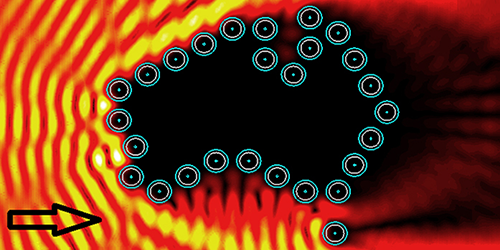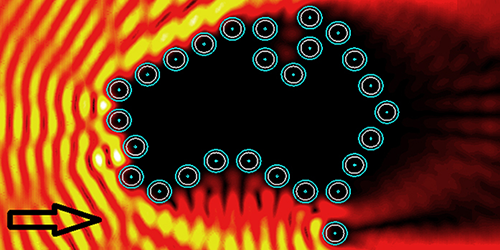Enter the Metacage
The nanoworld never ceases to surprise. The latest unexpected effect to emerge from this domain has been unveiled by Ali Mirzaei and collaborators from the Australian National University. Using analytical and numerical methods, they show how an array of equally spaced nanowires could block light from entering, or escaping, a region of almost arbitrary shape—something one might expect to be possible only using a continuous enclosure devoid of gaps. To demonstrate that the shielded region can take on nearly any form, they considered a wall-like region, a hexagonal shape and even an area shaped like Australia, the country in which the researchers are based.
The trick, Mirzaei and colleagues found, is to design arrays for which mathematical lines called separatrices overlap. The separatrix of a nanowire marks the boundary between a region around the nanowire where light flows into, and is absorbed by, the nanowire and an outer region where light flows past it. If the separatrices of the nanowires overlap, the transmission of light through the array is suppressed. The authors show that the overlap can be generated by using nanowires made out of dieletrics or semiconductors and by spacing them out with gaps of width comparable to the nanowires’ radii but smaller than the light’s wavelength.
The arrays, which they dub optical metacages, could be used in lab-on-chip settings to shelter microorganisms from radiation, while keeping them alive by letting liquids and gases through. They could also be employed to protect components of optoelectronic circuitry from unwanted light.
This research is published in Physical Review Letters.
–Ana Lopes





